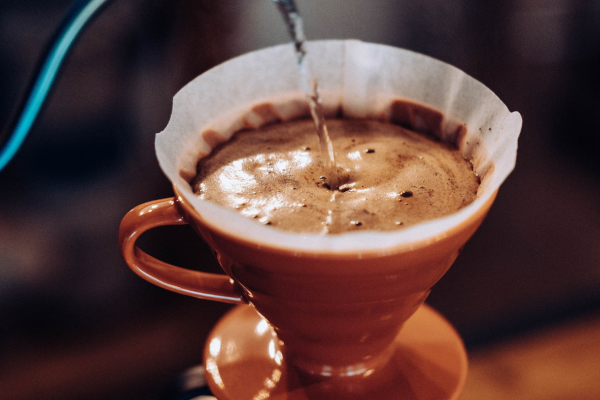Cold brew coffee has surged in popularity thanks to its smooth, mellow flavor and low acidity. Unlike traditional iced coffee, which is brewed hot and then chilled, cold brew is made by steeping coarsely ground coffee beans in cold water for an extended period—usually 12 to 24 hours. The result is a rich, slightly sweet coffee concentrate that can be served over ice, diluted with water, or mixed with milk.
In this article, you’ll learn exactly how to make cold brew coffee at home, what equipment you need, the best coffee beans to use, and tips to get the perfect flavor every time.
Why Cold Brew?
Cold brew offers several benefits that make it stand out:
- Low acidity: Easier on the stomach and teeth
- Smooth flavor: Lacks the bitterness often found in hot coffee
- Versatility: Can be customized with water, milk, or syrups
- Convenience: One batch can last for several days in the fridge
Whether you’re a casual drinker or a coffee enthusiast, cold brew is a refreshing and flexible alternative to hot brews.
What You’ll Need
To make cold brew at home, you don’t need fancy gear. Here’s a simple checklist:
- Coarsely ground coffee (freshly ground if possible)
- Cold or room temperature water
- A large jar, French press, or cold brew maker
- A fine mesh strainer, cheesecloth, or coffee filter
- A container for storing the finished brew
Optional tools:
- Coffee grinder (burr grinder recommended for consistency)
- Digital scale for precise measurements
The Ideal Coffee-to-Water Ratio
A good starting point is a 1:4 to 1:8 ratio of coffee to water, depending on how strong you like your cold brew. For example:
- 1 cup (85g) of coffee grounds to 4 cups (950ml) of water for a concentrate
- 1 cup of coffee to 8 cups (1.9L) of water for ready-to-drink cold brew
You can always dilute the concentrate later, so it’s better to make it strong and adjust to taste.
Step-by-Step Cold Brew Method
- Grind your coffee beans
Use a coarse grind, similar to raw sugar or sea salt. A finer grind can lead to over-extraction and make your brew muddy or bitter. - Combine coffee and water
Place the grounds in your jar or brewing container. Add cold water slowly, making sure all grounds are saturated. Stir gently to ensure even contact. - Let it steep
Cover and let the mixture steep at room temperature or in the fridge for 12 to 24 hours. Longer steeping times result in a stronger, richer flavor. - Strain the coffee
After steeping, strain the cold brew through a fine mesh strainer, cheesecloth, or coffee filter into a clean container. You may need to strain it twice to remove all sediment. - Store and serve
Transfer the cold brew to a bottle or jar with a lid. Store in the refrigerator for up to 7 to 10 days. Serve over ice and dilute with water or milk as desired.
Choosing the Best Beans for Cold Brew
While you can use almost any coffee bean, some are better suited for cold brewing:
- Medium to dark roasts: Offer a richer, chocolatey flavor
- Low-acid beans: Provide a smoother taste
- Single-origin or blends: Try both to see what you prefer
Experiment with beans from Latin America (nutty and chocolatey) or Indonesia (earthy and full-bodied) for cold brew that stands out.
Flavor Tips and Additions
Cold brew is a blank canvas for flavor experimentation. Here are some ideas:
- Spices: Add cinnamon sticks, vanilla beans, or cardamom during steeping
- Citrus: A slice of orange or lemon peel can add brightness
- Sweeteners: Try honey, maple syrup, or simple syrup
- Milk alternatives: Almond, oat, or coconut milk pair beautifully with cold brew
Adjust the brewing time, coffee-to-water ratio, and additives until you find your perfect balance.
Cold Brew vs. Iced Coffee
Though both are served cold, they differ in taste and method:
- Cold brew: Brewed cold, less acidic, smooth and sweet
- Iced coffee: Brewed hot and chilled, more acidic and bold
Cold brew is great for slow sipping and mixing, while iced coffee is better for those who enjoy a sharper flavor profile.
Common Mistakes to Avoid
- Using too fine a grind: This can lead to over-extraction and bitterness.
- Steeping too long: Over 24 hours can make the brew taste woody or stale.
- Not straining properly: Sediment left in the brew can make it gritty.
- Using poor-quality water: Always use filtered water for the best taste.
- Not storing it correctly: Use airtight containers and refrigerate immediately after straining.
Avoiding these mistakes ensures your cold brew remains smooth, fresh, and enjoyable.
Creative Cold Brew Recipes
Want to take your cold brew to the next level? Try these variations:
- Cold Brew Latte: Mix equal parts cold brew and milk or milk alternative. Add sweetener if desired.
- Mocha Cold Brew: Add chocolate syrup and a splash of cream.
- Cold Brew Tonic: Mix cold brew with tonic water and a lemon slice for a refreshing twist.
- Spiced Cold Brew: Brew with cinnamon, nutmeg, and clove for a warm flavor profile.
These ideas can help you discover new ways to enjoy your brew throughout the week.
Final Thoughts: Cold Brew, Your Way
Cold brew coffee is one of the easiest and most satisfying ways to make delicious, café-style coffee at home. With just a few ingredients and some patience, you can create a smooth, rich coffee that’s perfect for warm days, busy mornings, or any time you want a refreshing caffeine fix.
Start with the basics, experiment with ratios and flavors, and soon you’ll master your perfect cold brew recipe. It’s not just a trend—it’s a whole new way to enjoy coffee on your terms.

